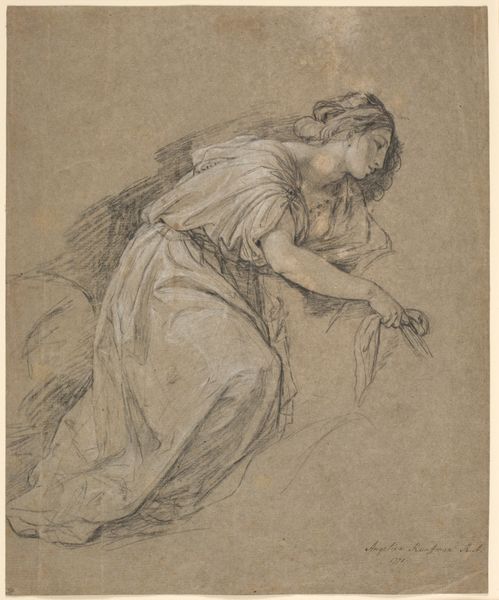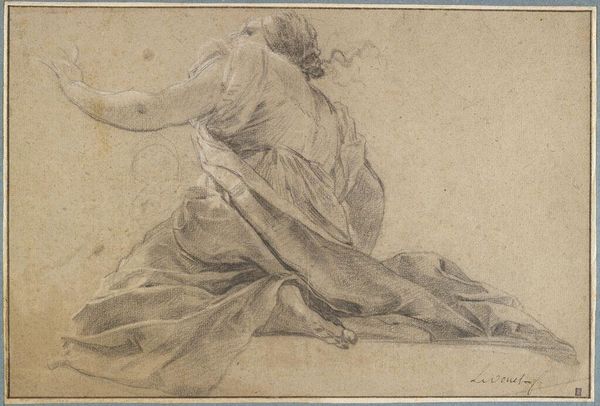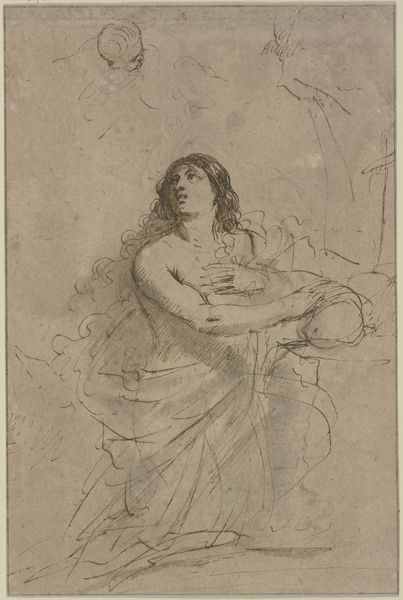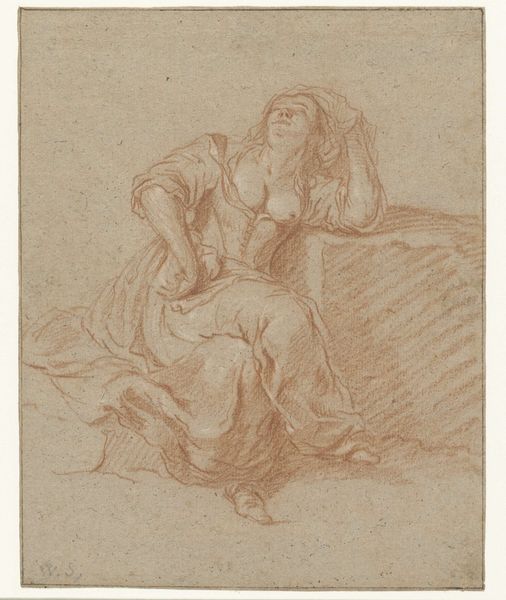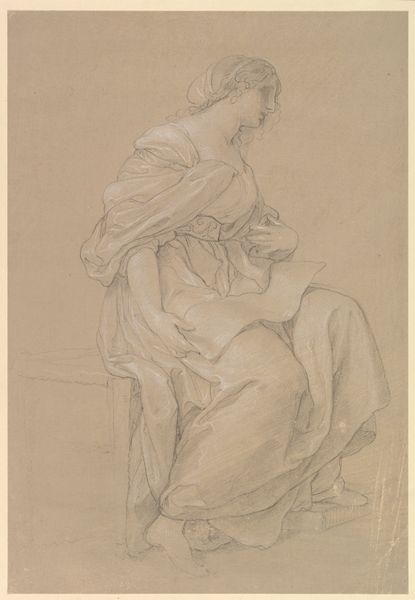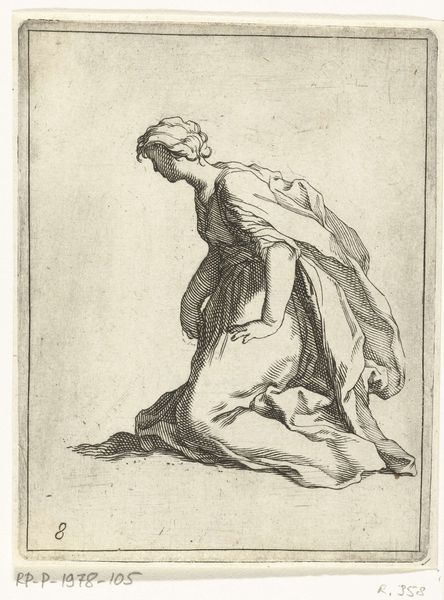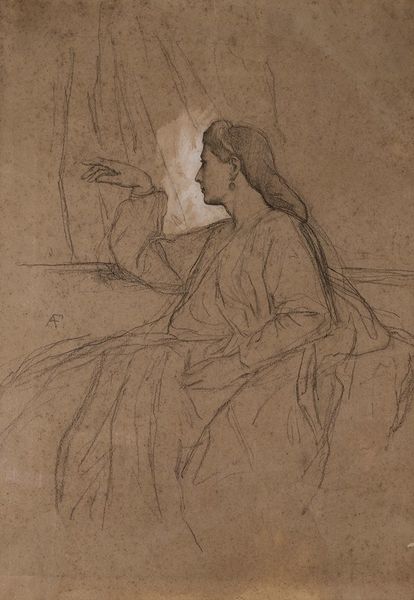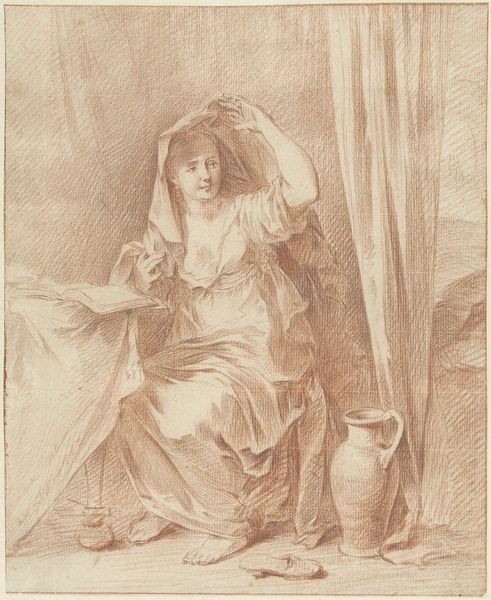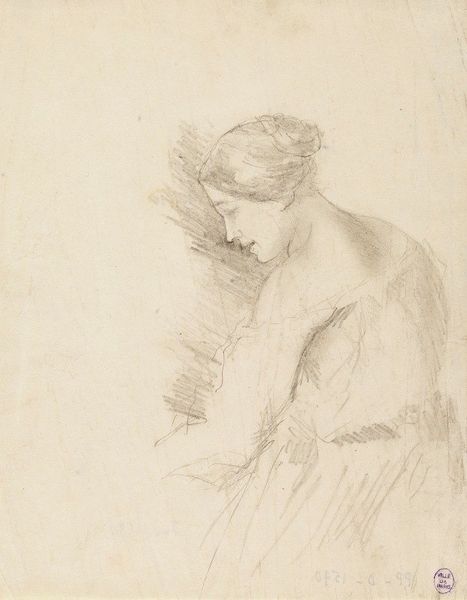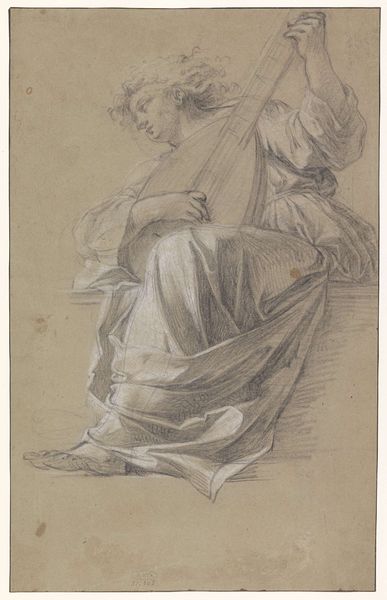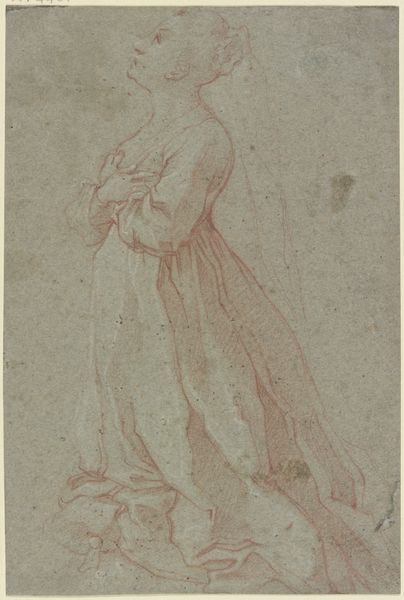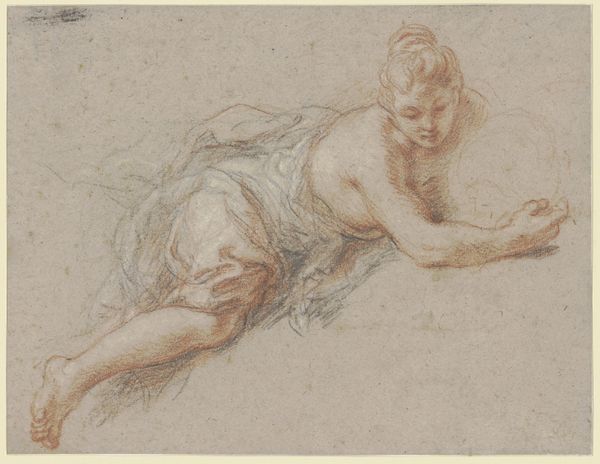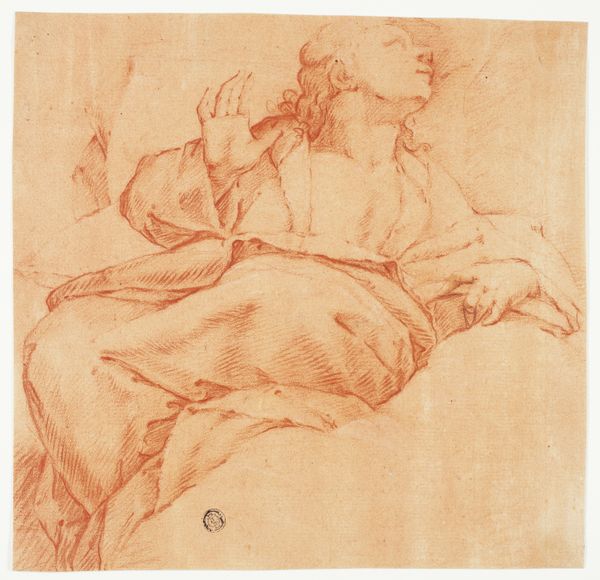
drawing, pencil
#
portrait
#
drawing
#
neoclacissism
#
charcoal drawing
#
pencil drawing
#
pencil
#
portrait drawing
#
history-painting
#
academic-art
Copyright: Public Domain: Artvee
Editor: This is Angelica Kauffmann’s "Study from life of a kneeling woman in profile," created in 1771. It's a pencil drawing, and I'm immediately struck by the delicate lines and the woman's introspective pose. What can you tell me about it? Curator: It's interesting to consider Kauffmann’s place within the overwhelmingly male-dominated art world of the 18th century. She co-founded the Royal Academy, demonstrating significant institutional power. How do you think a drawing like this served her within that context? Editor: It's a study, so maybe it was a way to demonstrate her skills, to prove her understanding of anatomy and form like any other artist at the Academy. But showing a kneeling woman... was she making a statement about femininity and submission? Curator: Perhaps, but within Neoclassicism, pose and drapery are often cues referencing classical sculpture and ideals. The ‘kneeling woman’ becomes less about literal submission and more about conveying an elevated, almost allegorical figure, aligned with academic history painting. Was Kauffmann then subverting or embracing existing hierarchies with this kind of symbolism? Editor: So, you're saying the political statement might be in her very participation, in taking on these traditional subjects, but also maybe infusing them with her perspective? Curator: Exactly! The drawing then becomes a complex negotiation. A demonstration of skill, access to powerful circles, engagement in aesthetic theory of the time but maybe on her terms, claiming agency within the established visual language. What do you make of the sketchy nature, versus a fully realized painting? Editor: It feels more intimate somehow, less about the grand statement and more about the process and accessing her personal touch, like we're getting a peek behind the scenes. I’ll definitely remember to consider the artist's position within these powerful art institutions going forward.
Comments
No comments
Be the first to comment and join the conversation on the ultimate creative platform.
